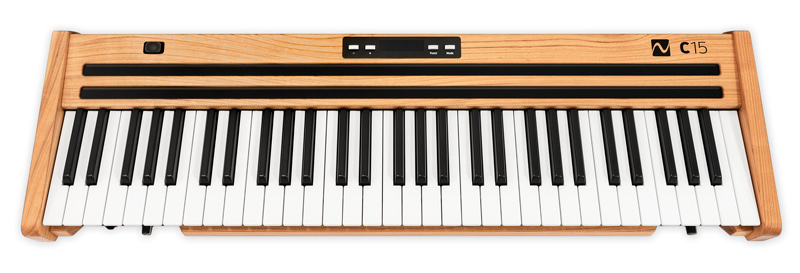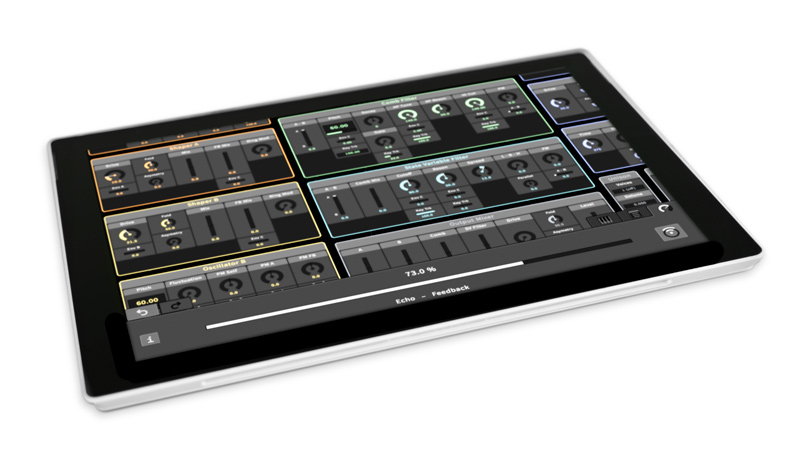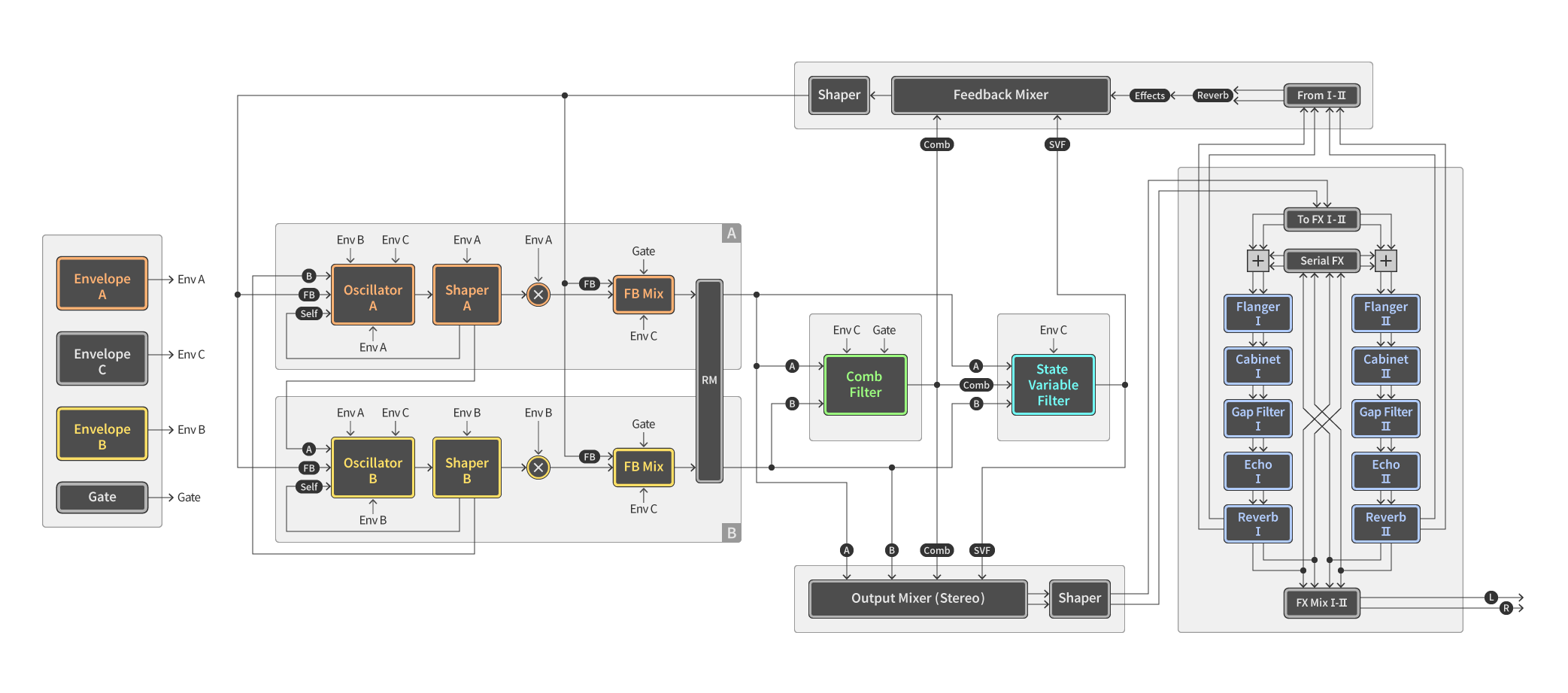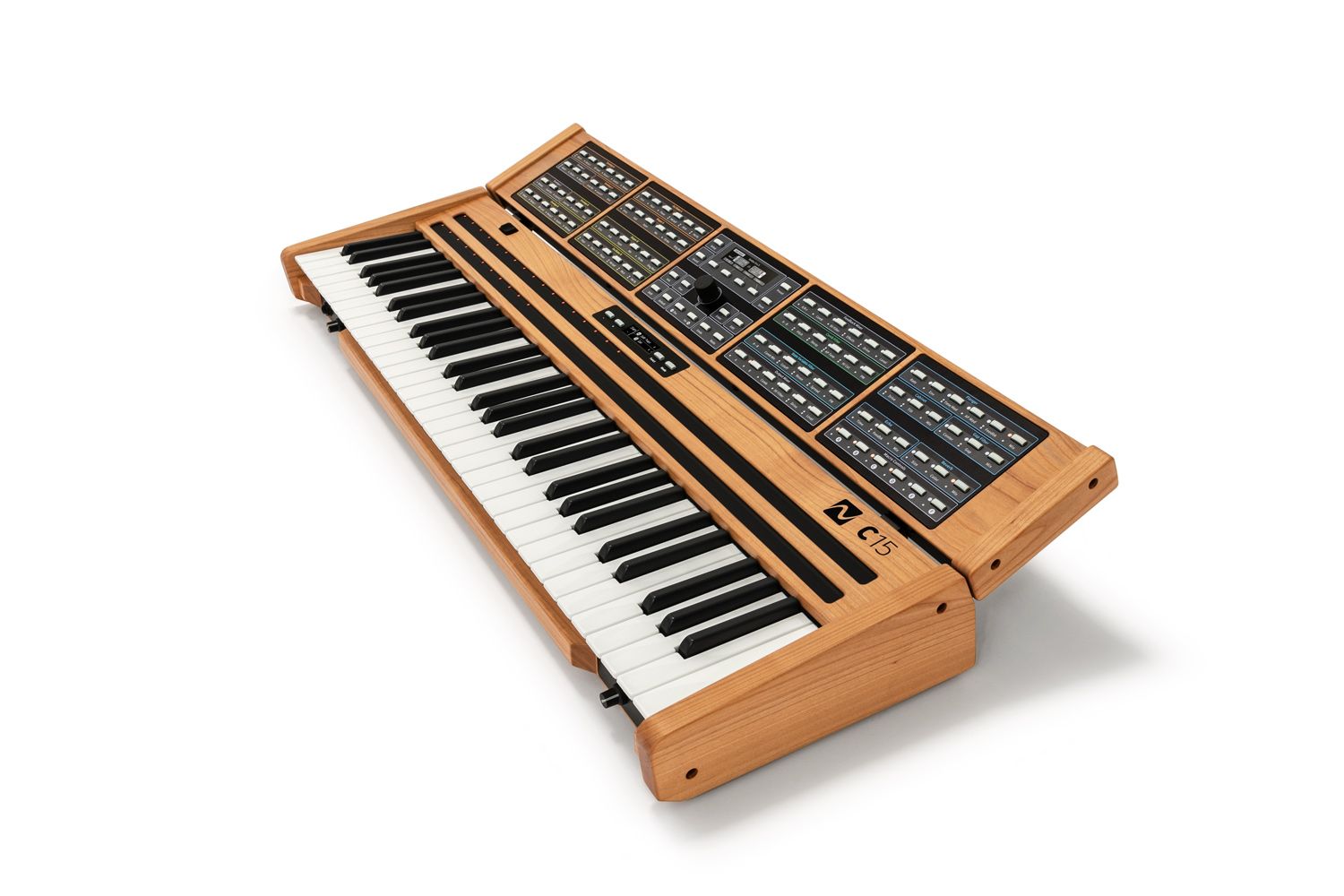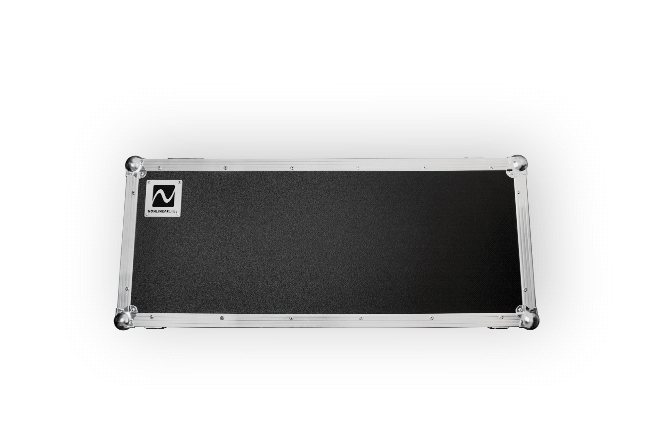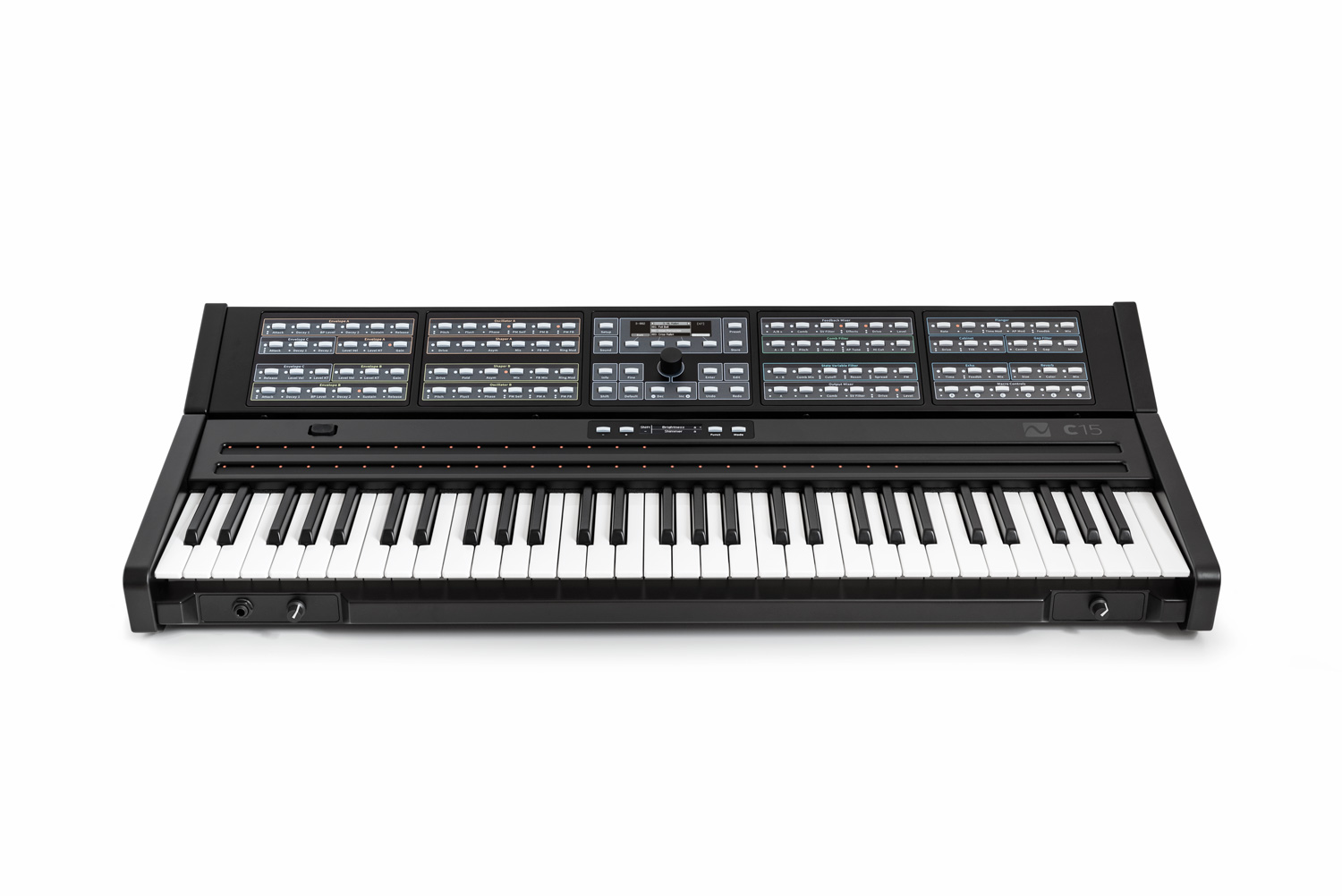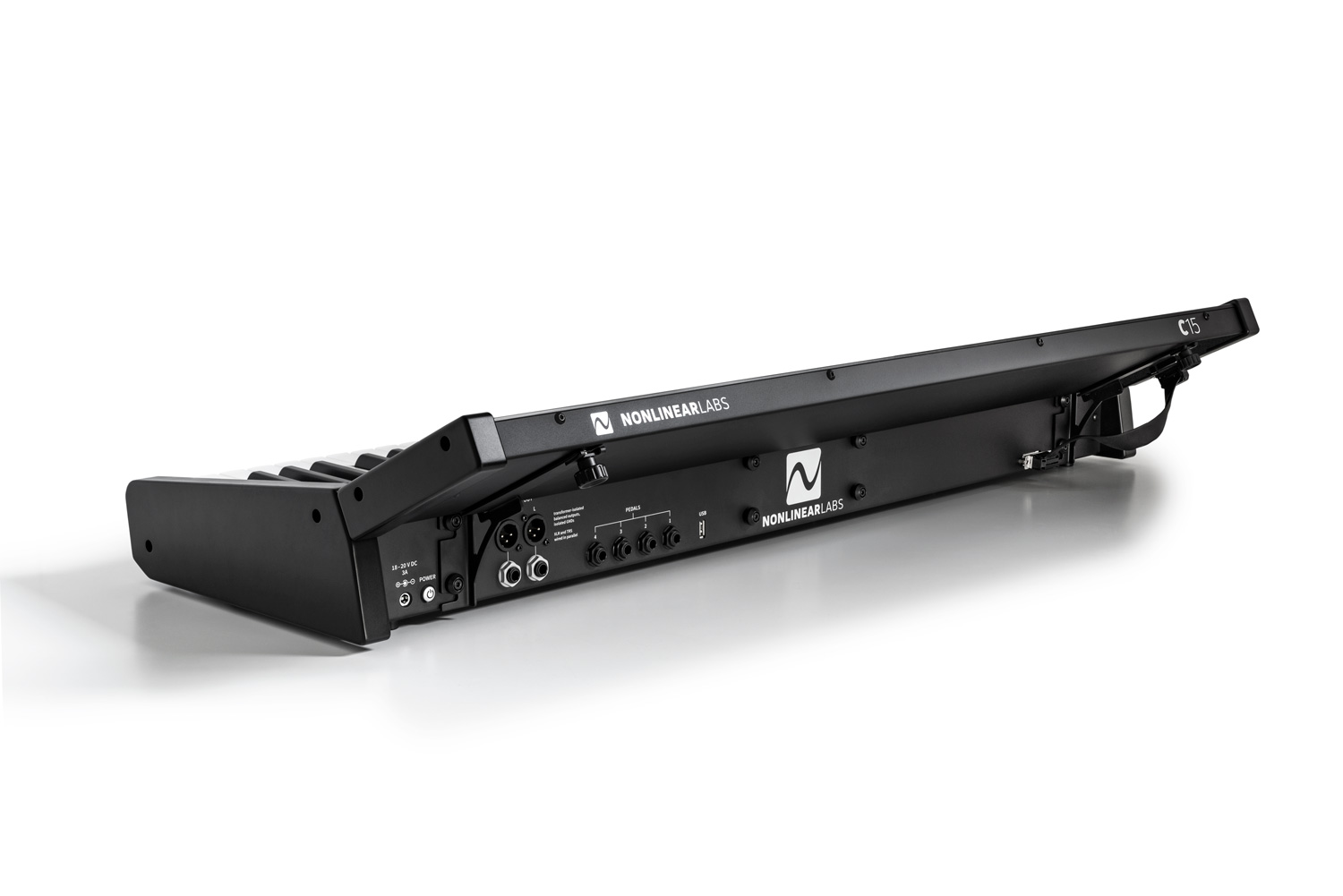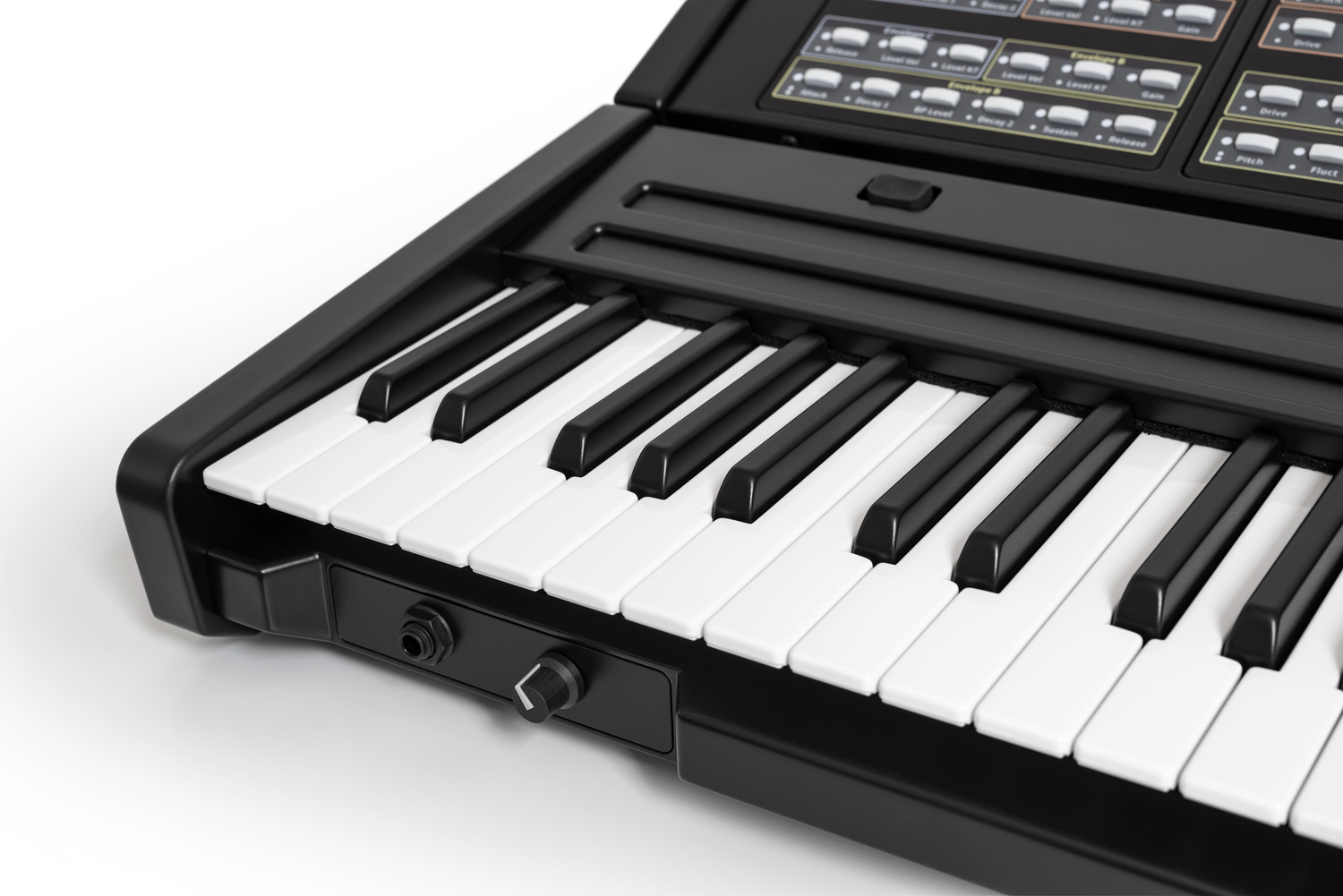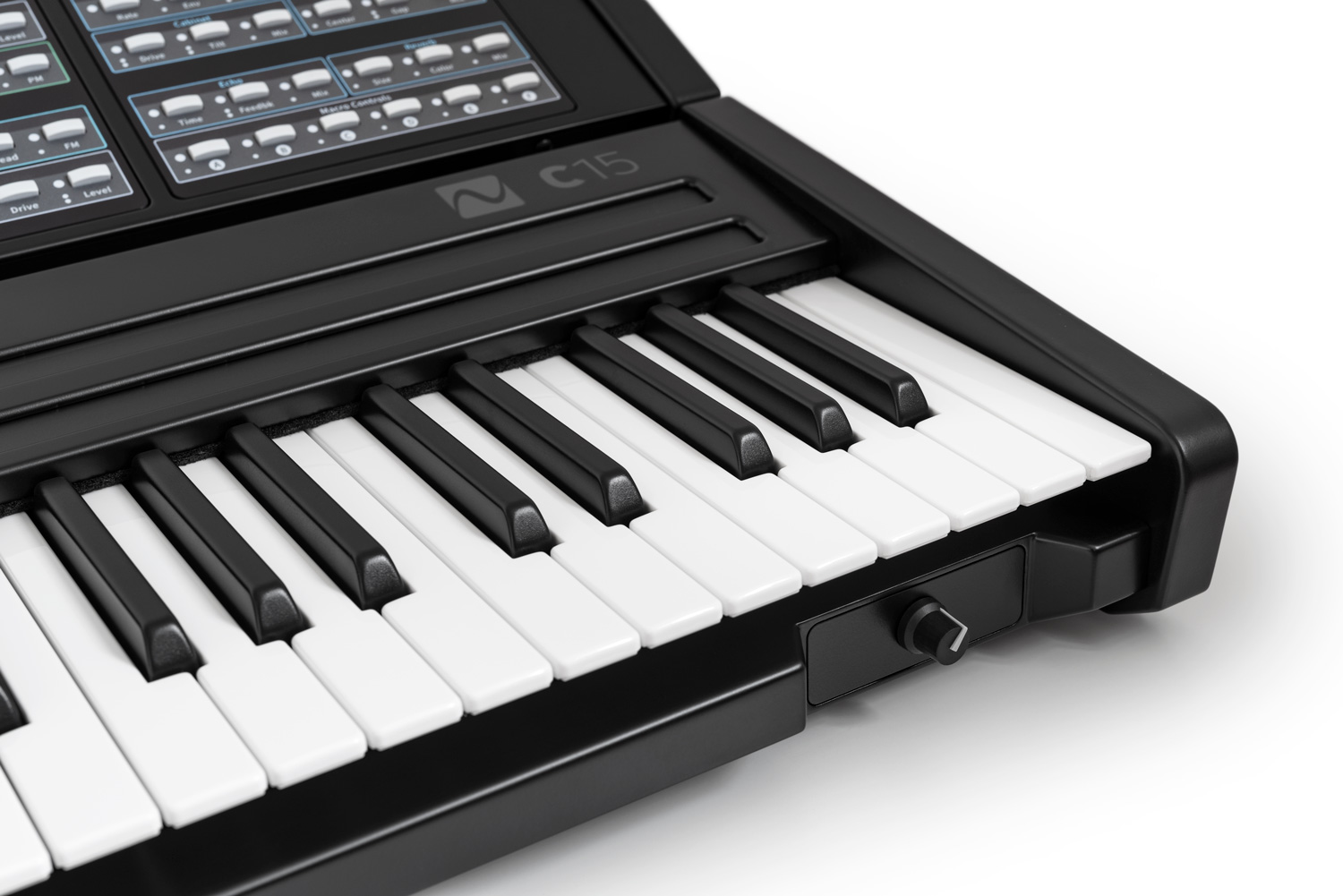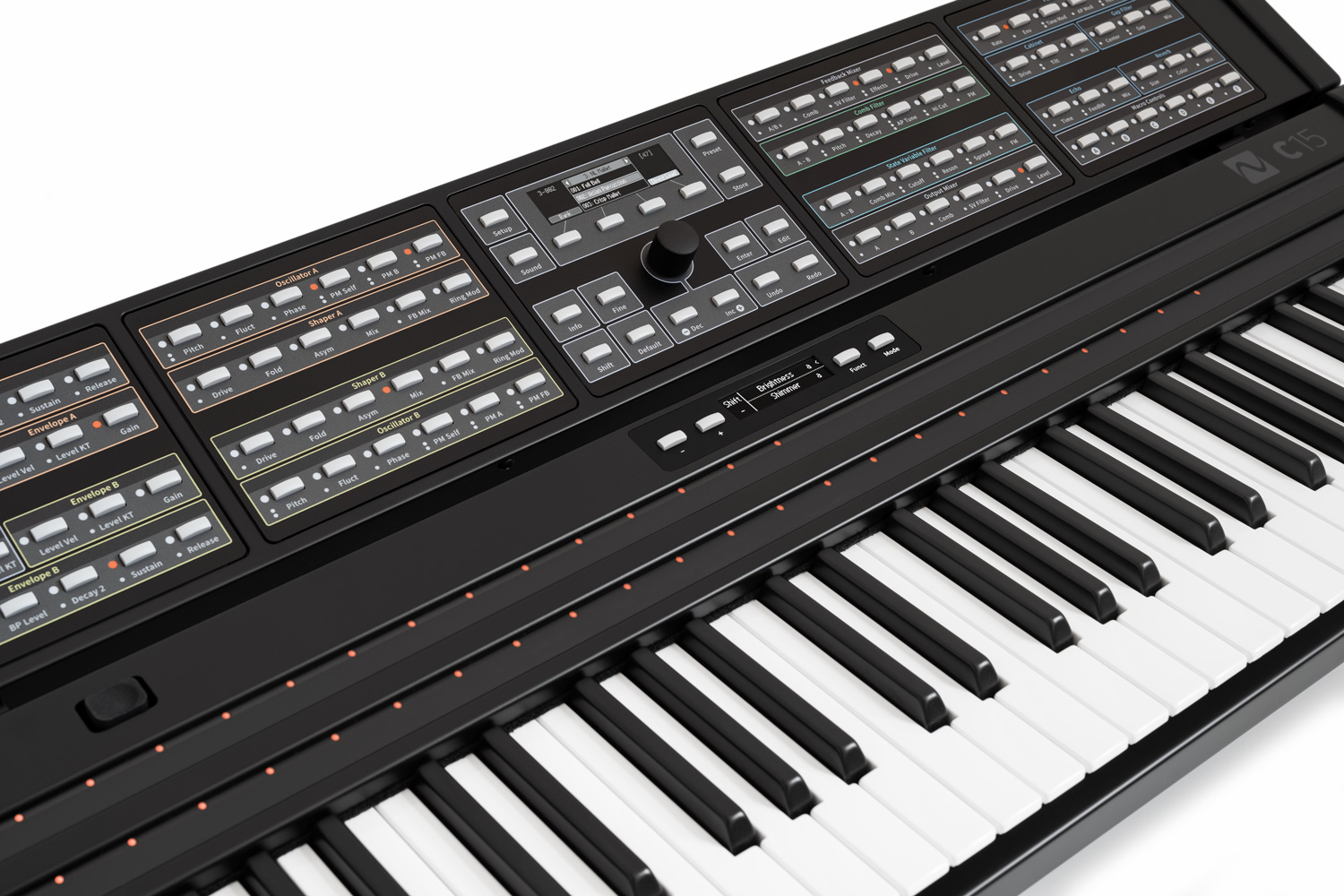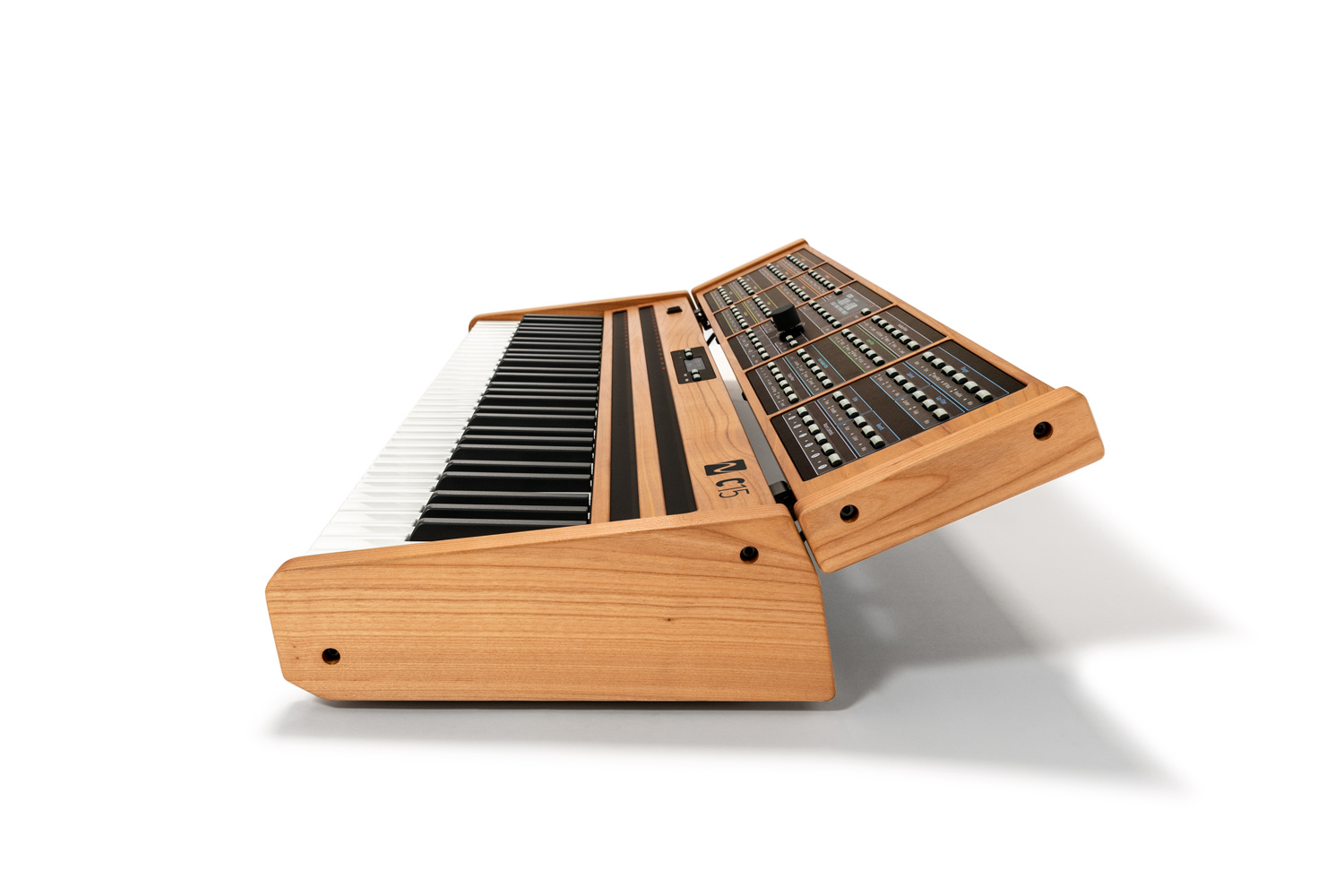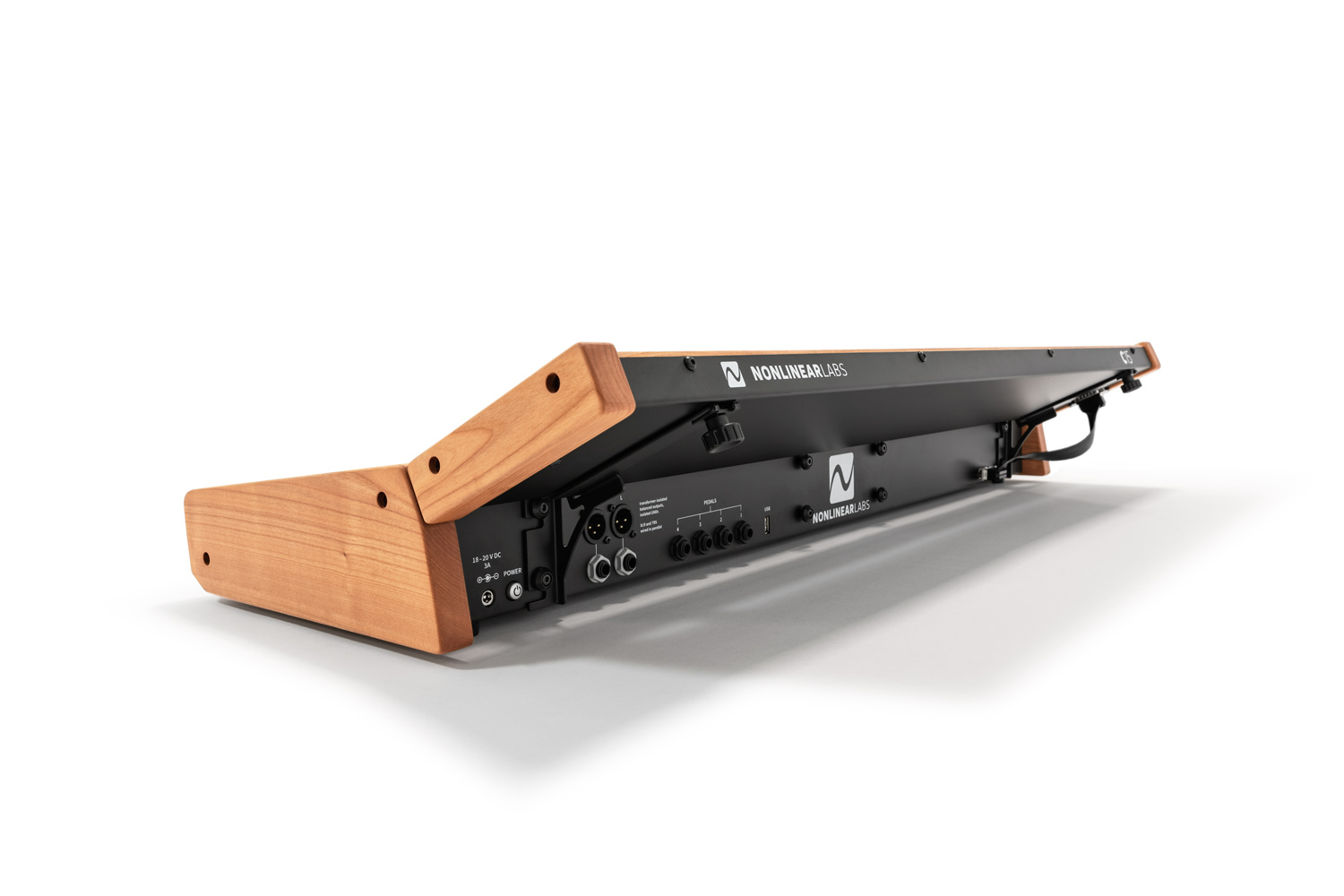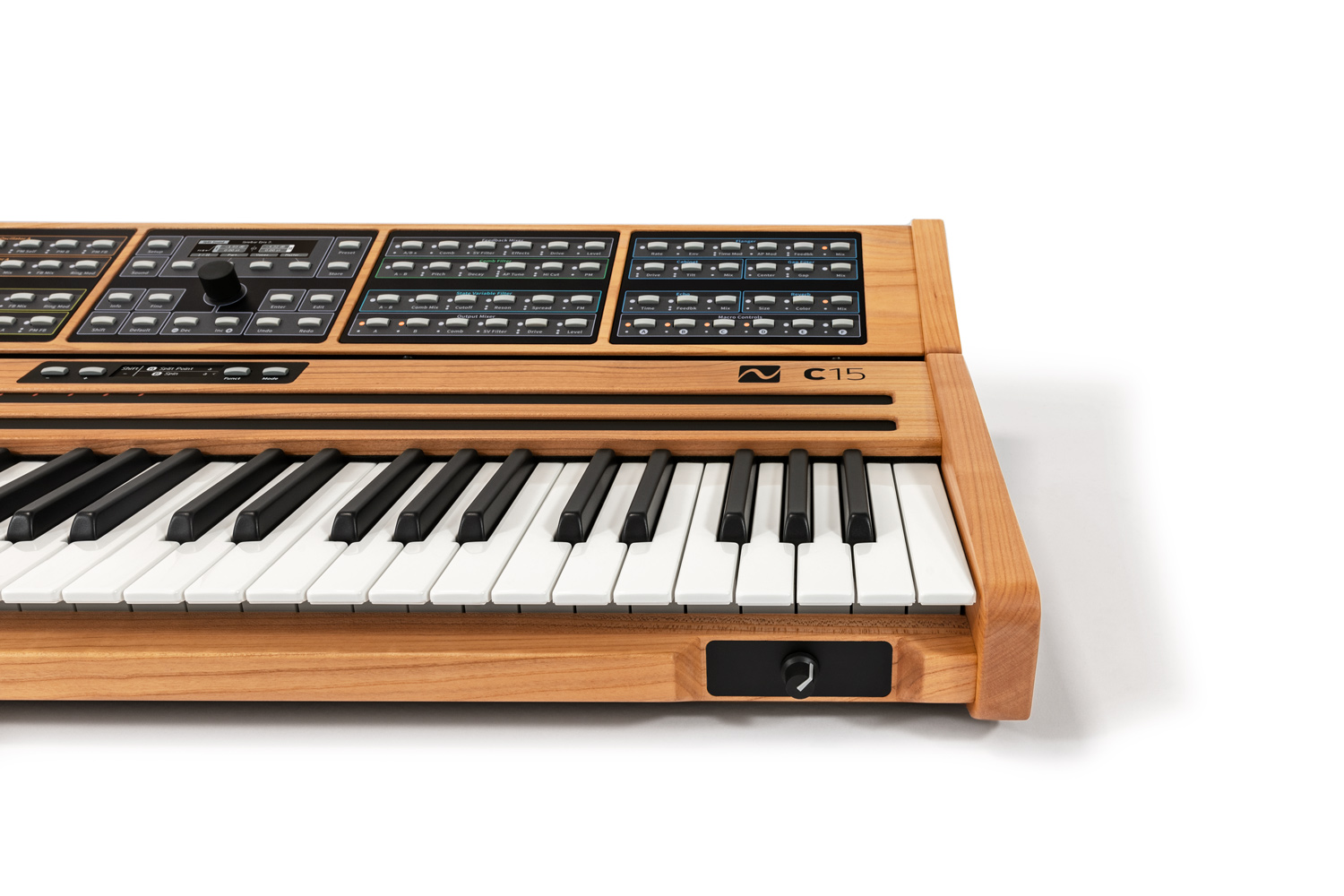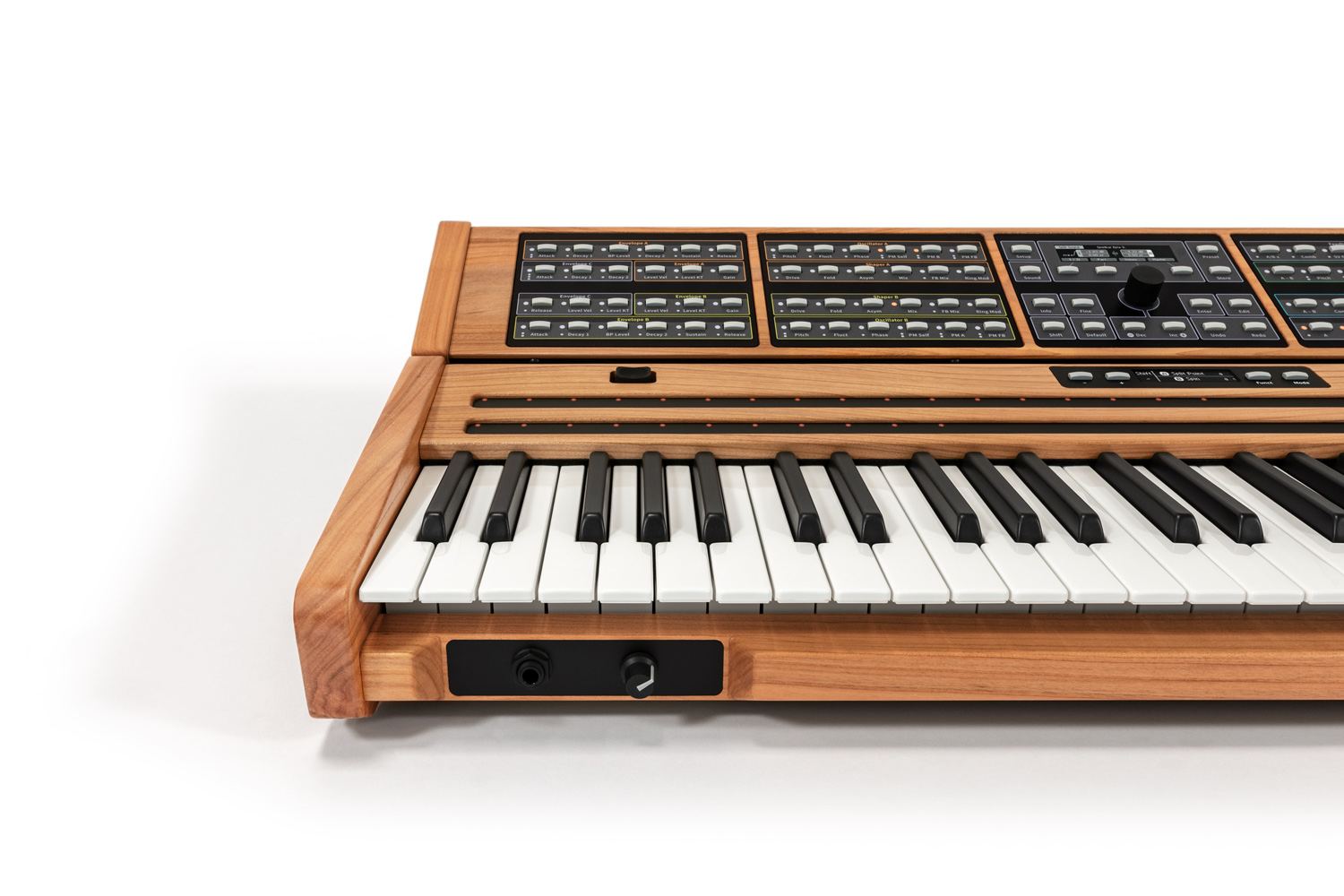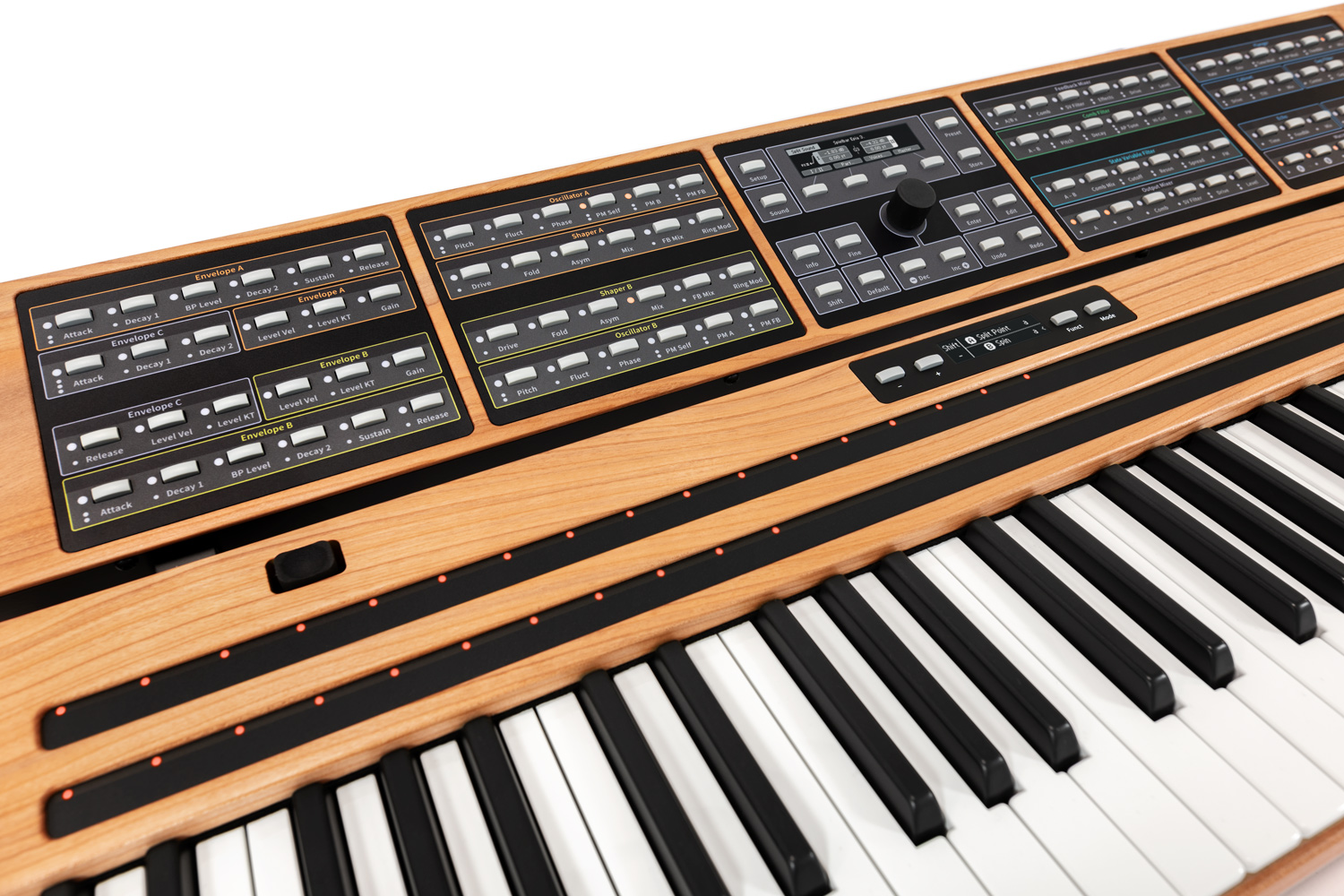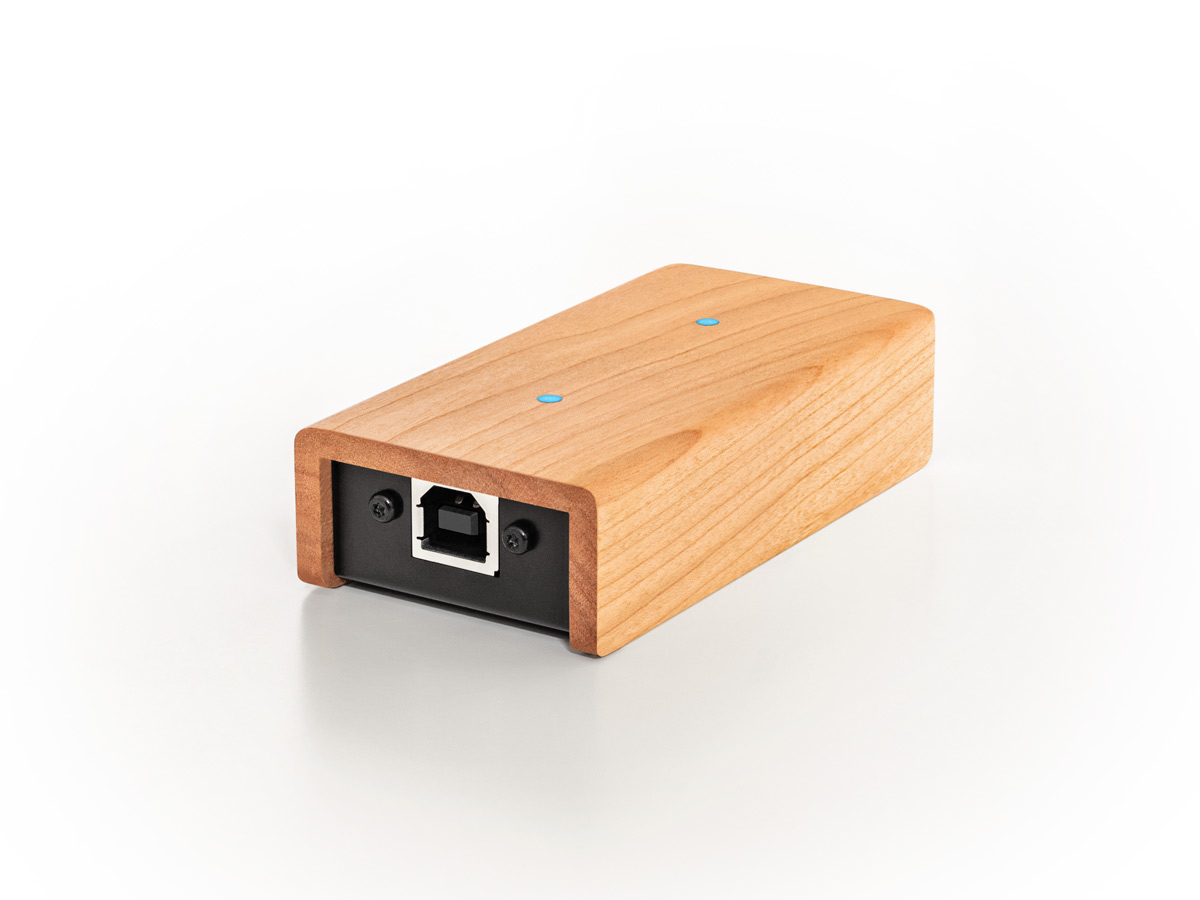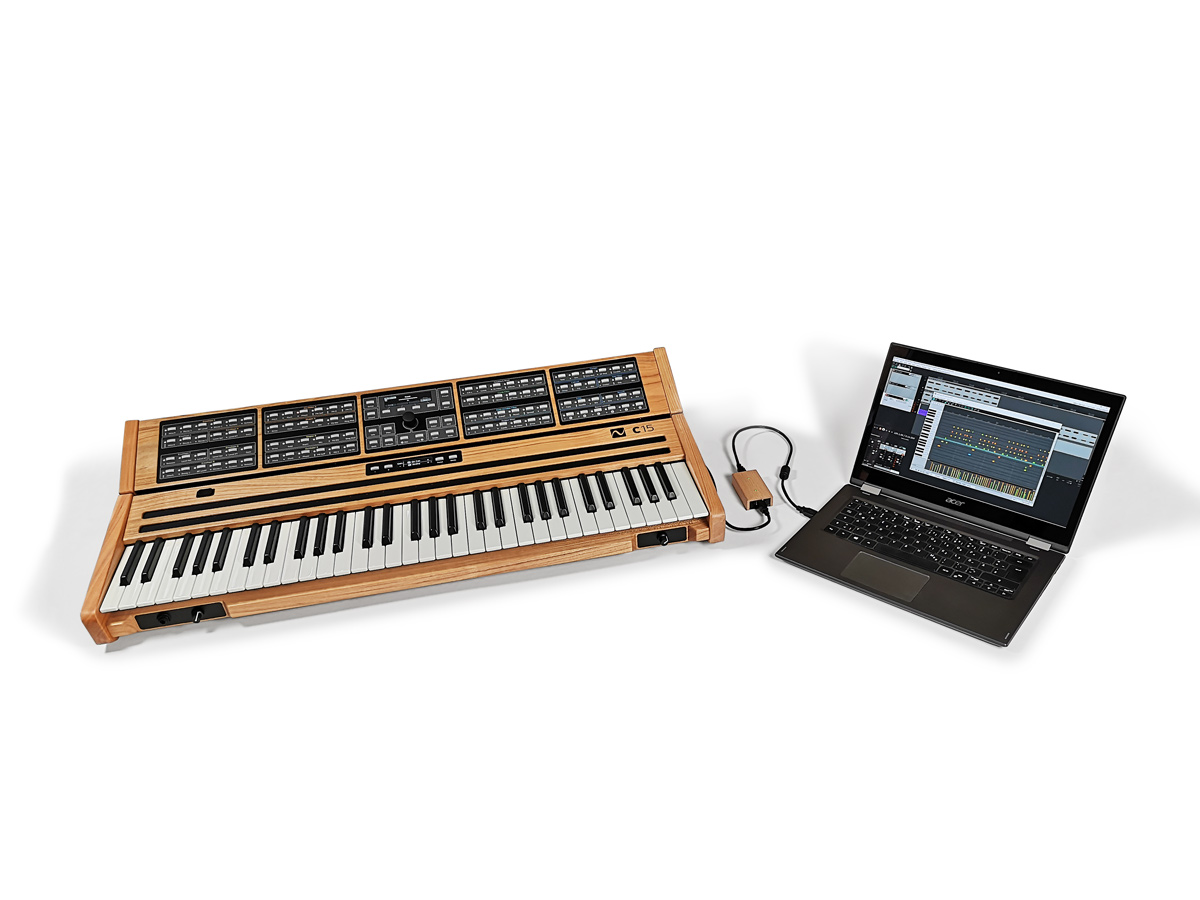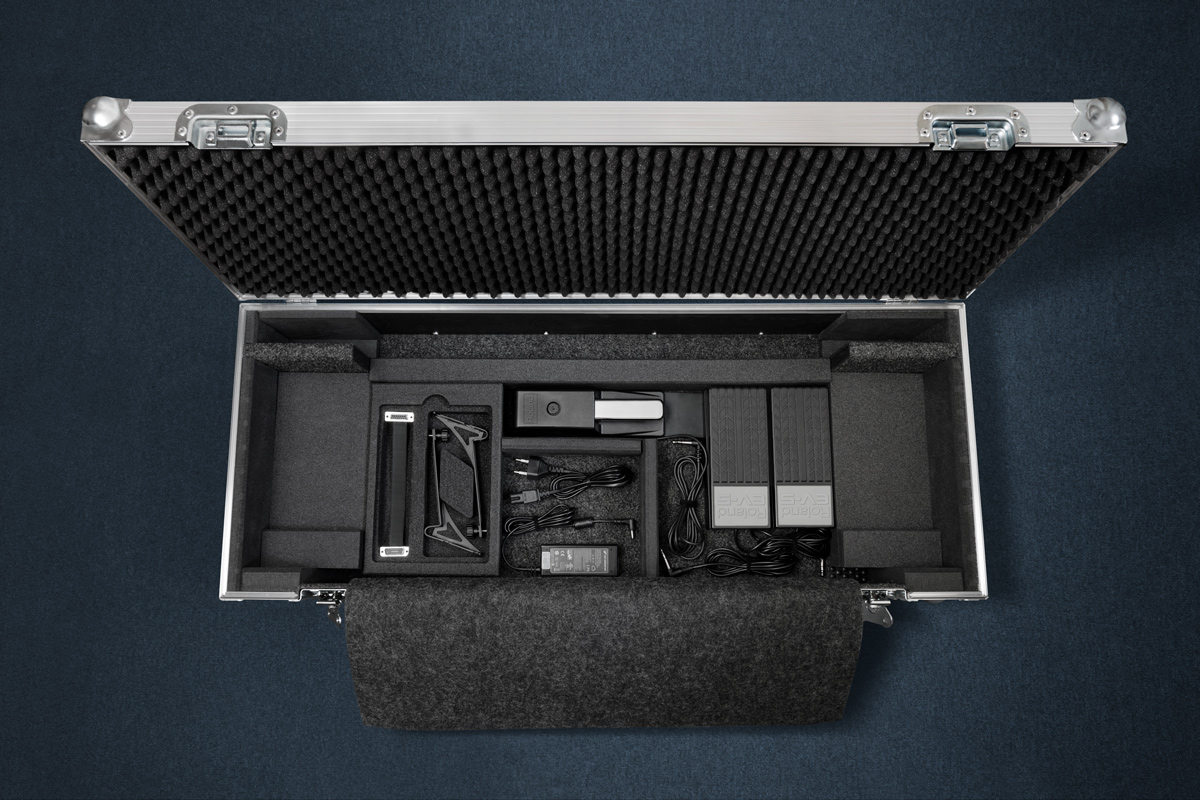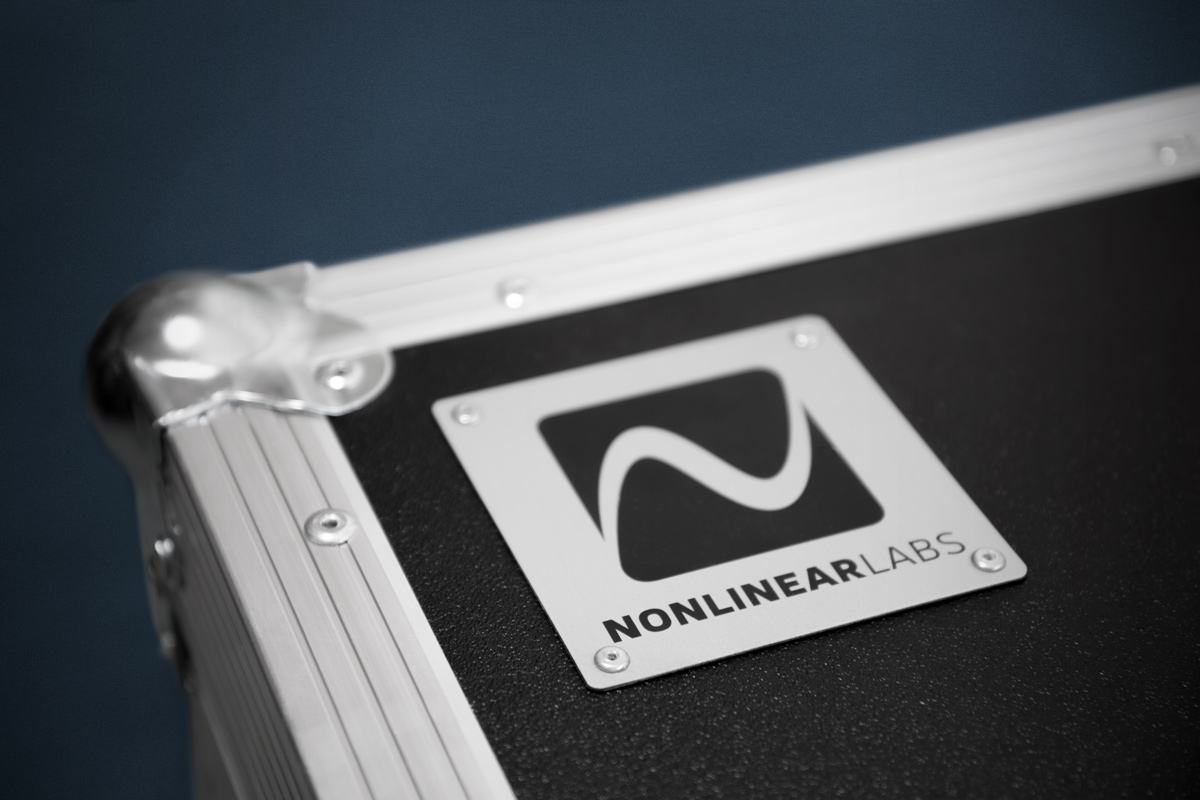Features
Two-Part Construction
The housing of the C15 synthesizer consists of two detachable parts: the base unit and the panel unit. The compact base unit contains all of the instrument's processor and audio components; it can be used without the panel unit in "play only" situations. The panel unit is an haptic user interface, mainly for sound design, but it can also be useful to control a more complex performance.

Play Interface
For the 61-note keyboard we have chosen the best semi-weighted model from the quality manufacturer Fatar. Experienced musicians will appreciate the long key arms for their improved play feeling.
Unlike with MIDI, the velocities of the keys and the values of the other physical control elements are precisely resolved into thousands of steps, and there is no loss of precision on the way to the sound engine.
The musician can make use of up to 8 physical controls: aftertouch, a pitchbend lever, two ribbons and up to four pedals. A coefficient matrix gives full flexibility for their mapping to the Macro Controls.
The pitchbend lever is a special design using magnetic forces for fast and natural horizontal movements from a center position.
The most prominent control elements of the C15 are the two long ribbons. Each of them includes an indicator bar of 33 LEDs showing the control position. The ribbons can be used for performance as well as for parameter editing. You can choose if they work in relative or absolute mode, with an optional return-to-center behavior.
A small control panel with an OLED display (128 x 32 dots) provides control over the ribbon functions and is also used for note and octave shift. If the panel unit is not mounted, this panel together with the ribbons will give access to preset selection and morphing, parameter editing and global settings like tune or velocity curves.
Pedals are the best way to control sound parameters while playing with both hands. Therefore the C15 allows up to 4 pedals to be connected. Footswitches are also supported, but for expressive playing we recommend continous damper/sustain pedals instead of switches - for this purpose we are also developing special pedal units.
Sound Editing Panels
The idea behind the panel unit is to provide a large area with many haptical controls, so that the functionality can be learned by the motoric memory, like the playing of a keyboard.
Four of the five panels are equipped with 24 high-quality buttons and corresponding state-indicating LEDs. Their main purpose is the selection of parameters. The labeling and grouping of the buttons is realized by exchangable magnetic overlays. This makes the user interface flexible. When fast switching between sounds becomes crucial the selection panels can be re-defined as direct access to presets. Future development will also bring new synth engines to which the user interface can be adapted.
The central panel - with a crisp OLED display (256 x 64 dots), an incremental encoder, and 18 buttons with dedicated functions - is the place where parameter values are displayed and edited, preset banks can be browsed and new presets can be stored. Many other functions are accessible here.
The Graphical User Interface
In addition to its hardware user interface, the C15 provides a visual access to its parameters and presets on computer screens and mobile devices. This unique approach is described here on our Graphical UI Page.
The Synthesis Engine
Based on elementary mathematic algorithms, the signals are generated, modulated, shaped, and filtered in realtime. Therefore the sound can be dramatically influenced by the dynamic playing of a musician.
The signal processing structure is the result of years of evolution and has been condensed down to an essential, yet powerful arrangement of carefully chosen components. The only signal sources are two sine wave oscillators. They are connected to each other and to a feedback bus for phase modulation and their signals are processed by two wave-shapers, a comb filter, a multi-mode filter, and a chain of five stereo effects.
Two mixers combine the signals from different points in the structure and forward their sum to the effects section and to the feedback bus. The sonic results of the feedback can become very complex and organic. With the Comb Filter running as a tuned resonator, the sound approaches that of acoustic instruments.
Our goal was not to create a universal sound engine or the most realistic imitation of existing instruments. Instead, we set out to create a sound source with a unique character, which at the same time offers endless variation and produces surprising results even after long periods of intensive exploration.
All possible sounds are reached without switching between different waveforms, filter types, effects, or signal path configurations. Everything can be continuously modulated, crossfaded, or morphed.
Read more about the engine on the Synth Engine page.
Open for New Sound Engines
The C15's sound engine is based on software running on an embedded computer. This means that the C15 can evolve without falling into obsolescence. Improved and new sound engines will be available in future. This also explains why we have chosen a generic parameter selection interface that can be re-defined by magnetic overlays.

Control
As a pure player instrument, the C15 is built for human control. You will not find modulation sources that create rhythmic patterns. We leave this to the musician. Instead, the C15 offers a large range of sensitivity thanks to the dynamics of the keys and extensive mapping possibilities for the signals coming from the two ribbons, the bender, the aftertouch and the up to four pedals. LFO-type of control signals can be easily produced by the specially designed lever of the bender.
The physical controls are routed to the Macro Controls, which are the main elements for influencing the sound of a preset. Each of them is freely assignable to up to 86 target parameters. The Macro Controls are the sources for an intuitive modulation system, where the effect of a modulation is directly shown as a movement of the target parameter. After assigning a Macro Control and adjusting its effect the sound designer also can give it a label that helps to understand its function.
The Preset System
Besides performance, the second important interaction with the C15 is sound design. The creations are stored by an advanced preset system which makes it easy to find and compare presets, to modify them, and to store new versions. They can be organized in a set of user-defined banks by intuitive copy, move and sort functions. The number of banks and presets per bank is not limited.
To help the user to find the right sounds, the preset system supports tagging and additional information that can be used for searching.
In a future update the C15 will also offer voice splitting and layering for two presets, and morphing as a powerful method to vary the sound in a transition between two presets.
Undo
The C15 provides virtually unlimited tree-based undo/redo functionality for all user interactions including parameter editing. This means you can always return to a sound that you had created some minutes ago. You can also jump between different branches of the undo tree which are automatically created when you undo and edit again.
Wood Parts
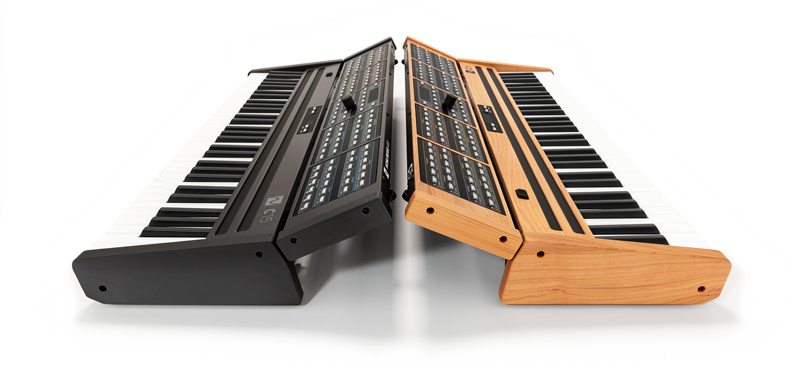
The C15 is available in black and in cherry wood. The delivery times of the two versions can be different depending on the supply situation. For prices please see our Order page.
Click the thumbnails for more images:
MIDI Bridge
A computer running a DAW or similar is the center of many setups. For the connection to a computer we offer the MIDI Bridge. It allows high speed transport of MIDI messages between two USB hosts, lets allows you to use the C15 and its high quality keybed as a production tool in your studio.Since the C15 is a USB host like a computer the MIDI Bridge functions as a double-sided USB device with two Type B connectors. One of the ports is connected to the C15 and the second to your computer
As we wanted to offer a similar level of accuracy via MIDI as the C15 does internally, the MIDI implementation of the C15 provides a High Resolution Mode that increases the resolution from 7 bits (128 steps) to 14 bits (16384 steps). In this way, the details and facets of the C15 sound engine can also be experienced via MIDI.
Features of the MIDI implementation:
- Transmits and receives notes, positions of the Hardware Controls, Program Changes
- Up to 185 parameters can be modulated via the Macro Controls
- 14-bit resolution for Note Velocities and for Controls available
- Separate MIDI Channels for Split zones and Parts of the synth engine available
- Local On/Off
For prices please see our Order page.
Flightcase and Other Accessories
As an important accessory we offer a robust flight case that fits perfectly with the C15 and also has space for some pedals. It protects the instrument during shipping and is a safe solution for taking the C15 on the road. You can also buy a set of pedals from us which we recommend.
For prices please see our Order page.
